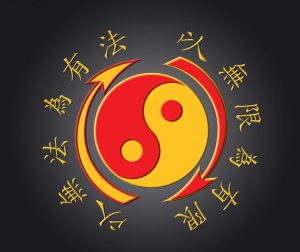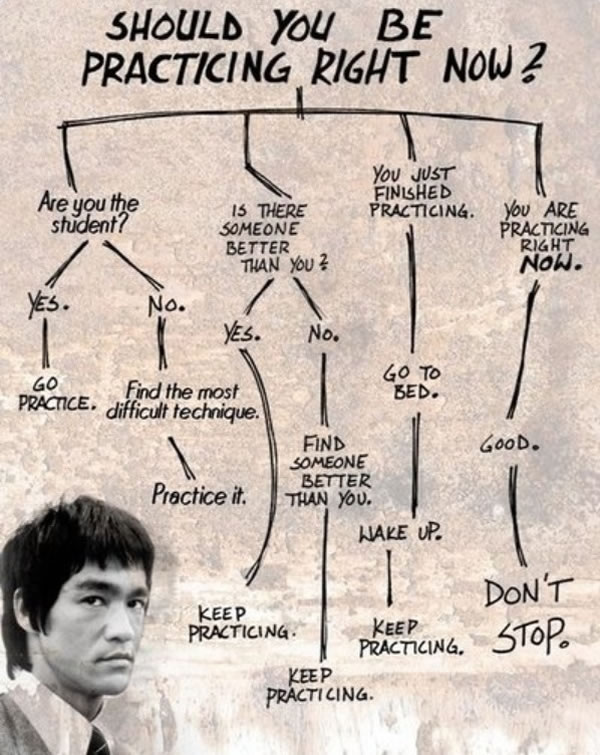
“Jeet Kune Do favors formlessness so that it can assume all forms, and since it has no style, Jeet Kune Do fits in with all styles. As a result, Jeet Kune Do uses all ways and is bound by none and, likewise, uses any technique or means which serves its end. In this art, efficiency is anything that scores.”
– Bruce Lee, Tao of Jeet Kune Do
According to legend, after the destruction of the Shaolin Temple by the Qing Dynasty (circa 1700), five elders, known as the Venerable Five, managed to escape and go into hiding, each carrying within them the tradition of various forms of kung fu. One of these was Abbess Ng Mui (Chinese: 五枚, Wú Méi), holder of the White Crane tradition. In the village within which she took refuge, Ng Mui met 15-year-old Wing Chun, who was being hounded into marriage by a bandit. Desperate, she asked Ng Mui to teach her how to fight. Ng Mui, recognizing that Wing Chun’s age and body (and the time limit) would not allow mastery of full-force kung fu, distilled the White Crane form into its essence, and taught this simplified (but still highly effective) form of martial arts to Wing Chun.
Generations later, this form of martial arts, known as wing chun, was taught to the Grandmaster Ip Man, who in turn taught it to Bruce Lee.
In developing Jeet Kune Do, “the formless form,” Bruce Lee was interested in getting away from rigid adherence to one technique, but instead learning all techniques and using each or combinations therein to meet any and all situations. If you are a master of wing chun, and your opponent knows it, then she or he can anticipate what you are going to do and counter your attacks and defences. But if you know wing chun but you also can fight in other kung fu forms, and you also know karate and judo and tai chi and tae kwon do, and you also know how to wrestle and how to fence and how to dance, then your opponent will not know what to expect, and you will be able to effectively dismantle and redirect any attack that comes your way.
In Bruce Lee’s Jeet Kune Do school, “the [symbol for the] first rank was a blank circle, the original state of freedom and potential. The further ranks were represented by yin/yang emblems of various colors, signifying all aspects of life. The highest grade was again the blank circle: the return to the Source” (from Bruce Lee: Fighting Spirit, by Bruce Thomas; Blue Snake Books, 1994). In other words, we do a lot of work and actively learn many techniques so that we can eventually forget them and simply observe and react.
Our work in class is about finding that balance between instinct and control, learning a multitude of techniques so that we can adapt to any and all possible situations, groups, partnerships, and challenges. At the heart of this is the notion of what Bruce Lee called “pliable awareness” – a state of being absolutely relaxed and adaptable, and absolutely aware of everything happening around you.
In pliable awareness there is a physical form – awareness of your own individual centerline, aligned with gravity in stillness and in action, following the natural flow of energy; a mental form – letting go of worry, doubt, and speculation; and an emotional form – choosing to feel positive.
This is pliable awareness:
As is this:
And this:
And this:
And this:
And this:
And this:
And this:
And this:
And this:
And this:
And from beginning to end of this.
And also this.
Each of the other “Mindset” tabs is related to this central idea. This is our work.

Links:
The Lineage of Grandmaster Ip Man
The Way of the Intercepting Fist















